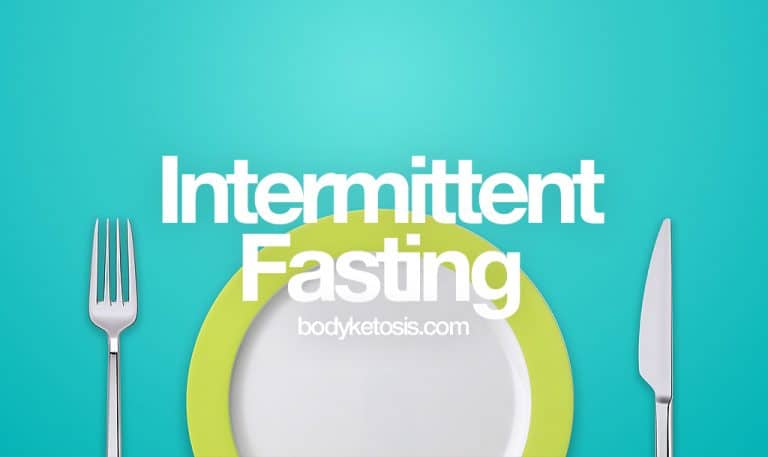The Ultimate Guide On How To Get Into Ketosis Fast? (Under 36 Hours)

Just found out about keto diet and you are thinking what is the fastest way to ketosis?
You already know everything about keto but finding difficult to enter ketosis?
You are wondering why reaching ketosis needs to be so time-consuming?
Probably everyone who has ever been in ketosis or planning to try the keto diet, want to know how to get into ketosis faster.
And who can blame them, it takes time and effort.
When I first found keto diet and understood what it can do with our bodies (cure diseases, burn fat and make you look younger). I became obsessed with it. I felt like I just struck a goldmine.
After the first week, I also understood that it is way more time to consuming to enter ketosis as I initially thought.
Every time I fell off the keto wagon, I felt that I don’t want to wait again the whole week before reaching ketosis.
There just seemed to be some more strategical and faster way.
This guide is based on my experience and shows you how to get into ketosis fast, under 36 hours to be exact.
I call it The Carb Burning Method.
Although many parts of this guide have been backed up by scientific research, understand that there is no one size fits all.
Your results may vary depending on your body, age, health condition and other factors.
How ketosis works?
Before we go over the actual process, let’s dive down and go over how ketosis works. Many of us, at some point in our lives, have some amount of ketones in our blood.
We just don’t know about it.
For example, if you ate your last meal at 3 p.m. and your next meal is 11 a.m. in the next day, then it is very likely that your body started to produce ketone bodies. A minor state of ketosis – since you have been fasting for 20 hours.
This is your body’s superpower, this is how your body deals with lack of food. However, most people never achieve a consistent state of ketosis because of the constant supply of carbs.
The state of ketosis is achieved when your body has elevated ketone levels, typically starting from 0.5 mmol/L.
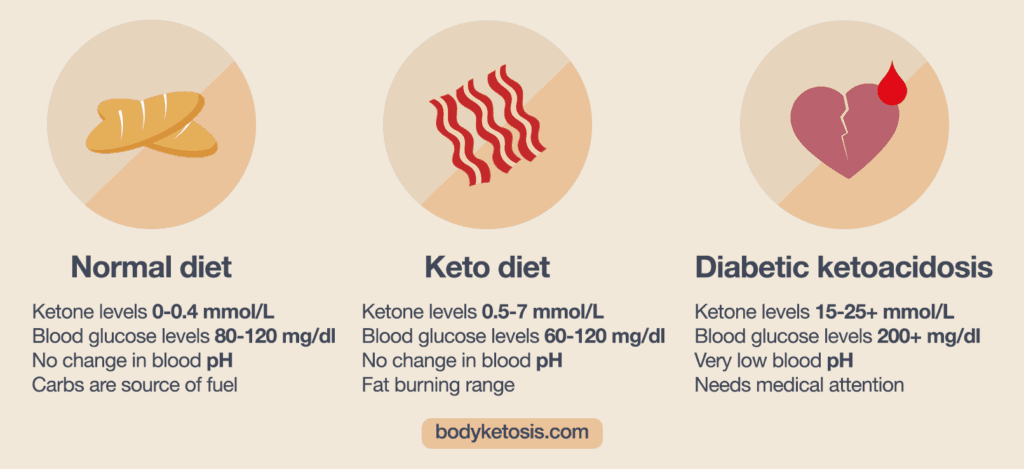
Usually, it takes around 3-7 days for your body to enter into the state of ketosis. How fast this happens is closely related to how many carbs you had eaten before you restrict them.
How fast an individual enters into the state of ketosis depends also on many other factors like weight, height, health condition, lifestyle and much more.
Also, if you are coming from carb-heavy diet, it may take more time for your body to switch.
Four conditions need to be met, in order for your body to get into the state of ketosis:
- Blood glucose levels need to be dropped – Reducing carbohydrates has been shown to lower fasting blood glucose.
- Body’s glycogen stores (about 2000 calories’ worth) need to be depleted – The glycogen stores in the liver can be depleted approximately in 48 hours.
- Insulin levels have dropped significantly – As insulin triggers the uptake of glucose from the bloodstream and halts the utilization of fat as a fuel.
- The concentration of serum blood ketone levels needs to be above 0.5 mmol/L.
All of these conditions are crucial for the state of ketosis. The body naturally will utilize glucose whenever it’s available, whether in the bloodstream (from food) or from the breakdown of stored glycogen.
Thus, by lowering the amount of glucose from food and the amount of glucose stored as glycogen, the body is able to start burning fat as its primary source of energy.
Most people actually get into ketosis within 24 hours, but your body won’t start spilling ketones into the urine and usually, you don’t experience keto flu on the first day.
By the time your ketone measurements show results, ketosis is well underway.
Types of ketosis
To understand better how we can enter ketosis faster, let’s dive even deeper and go over different forms of ketosis.
Yes, there are different forms, who knew right?
Different forms of ketosis are fasting ketosis, nutritional ketosis, and pathological ketosis. They vary in degree of ketone production and method of induction.
1. Fasting ketosis
Ketosis occurs when insulin and blood glucose levels decrease to an extent that allows for increased fat oxidation – which is followed by ketone production.
A minor state of ketosis can occur with overnight fast.
This may produce ketone levels around 0.1 mmol/L to 0.03mmol/L. As the fat continues, the rate of ketone production exceeds ketone clearance resulting in increased blood ketone levels.
Longer duration fasts are often referred as starvation or fasting ketosis.
Fasting ketosis can have many benefits like effective treatment of epilepsy and obesity, a method to induce ketosis prior to chemotherapy and much more.
Fortunately, similar occurrences happen during overnight fasts and intermittent fasts as well with only downside of a slightly lower rate of ketone production.
This shift in fuel utilization is thought to be a survival mechanism that our bodies have retained through evolution.
2. Nutritional ketosis
Nutritional ketosis can be achieved thanks to dietary modification. Nutritional ketosis can be divided into carb-restricted ketosis, supplemental ketosis, and alcoholic ketosis.
- Carb-restricted ketosis – This method is the most common approach to achieve the state of ketosis. Also, typically results in a greater increase in ketones compared to an overnight fast. The downside is it will take more time to enter ketosis. After a week of carb-restricted ketosis, circulating ketones can elevate to levels between 2-5 mmol. This is a sustainable approach that will provide all the benefits of the keto diet.
- Supplemental ketosis – Ketosis can also be achieved through the consumption of ketogenic supplements like MCT’s or exogenous ketones. This can be efficiently paired with a carb restricted ketosis. It is understandable that this type of ketosis is often preferred as carb restricted ketosis may often be hard to follow. Often because of diseases, health status or inability to follow carb restrictions. Although supplements can be very effective in terms of getting into ketosis, heck they can get enough ketone bodies in your blood within an hour, but they won’t fix the root problem by their own. Also, this is a short fix and will not maintain the state of ketosis.
- Alcoholic ketosis – Alcoholic ketoacidosis (AKA) is a variation of nutritional ketosis because it occurs due to a dietary intervention. This type of ketosis is a result of alcohol consumption and causes acidic internal environment due to the drastic increase in ketone bodies. Symptoms of this can be nausea, vomiting, fatigue, abdominal pain and much more. AKA typically occurs the day after drinking and is characterized by increased ketone production and mild elevation in blood glucose levels. This makes it different than other types of ketosis. This form of ketosis is not recognized as safe and is not recommended a variation of ketosis.
3. Pathological ketosis
The final type of ketosis is pathological ketosis and in particular diabetic ketoacidosis (DKA).
Pathological ketosis occurs due to uncontrolled rates of ketogenesis (10-15mmol). This leads to way more higher ketone levels as compared to carb restricted or supplemental ketosis.
DKA typically occurs in Type 1 diabetics sometimes also in Type 2. Type 1 diabetics do not produce enough insulin, leaving glucose in the blood rather than shuttling it towards the cells.
This convinces the body that it is starving leading to increased ketone production.
The Carb Burning method

Now we know all the different types of ketosis.
Fasting, nutritional and supplemental ketosis all have their own benefits and downsides. Fasting ketosis typically results in lower level of ketone production and is probably the easiest to do, but is dependent on the duration of the fast.
Nutritional ketosis can be achieved through carb restriction but is dependent on the glycogen stores. Although supplemental ketosis can be effective in some rare cases, most of the time it should be used as meant to be – a supplement.
To get the maximum of the diet, not to use it and hope that it will push you to ketosis by its own. I wasn’t happy with the duration of reaching into ketosis and I chose to take something from all of the three and to combine them.
Using this method allowed me to reach ketosis under 36 hours.
The Carb Burning Method essentially means exactly how it sounds: The goal is to burn all available carb stores as fast as possible.
Once this is done, your body can enter ketosis.
Next, we go over how this can be achieved:
1. Ignore Calories, focus on fats
For now, you probably know that the keto diet is one of the easiest and fastest ways to lose weight.
While it is true, it is not a goal for this article. The goal of this guide is to get you into the state of ketosis as fast as possible, meaning right now we are not trying to lose weight.
Even more, this guide describes the process over 36 hours. It takes way more time to lose weight.
And if you are monitoring paranoidly the scale and see a huge drop, then most likely it is just water. My suggestion would be to eat until you are satisfied and don’t use the scale during this process.
Everyone knows that in order to lose weight you need to eat less than you burn – doesn’t matter the diet, at the end, it still comes down to this fact. This works with the keto diet, paleo diet, IIFYM and so on. While this is true, it is irrelevant in this case.

A number of calories have nothing to do with you reaching ketosis. Because our goal is to enter into the state of ketosis as fast as possible, not to burn fat at this point of time. You need to ignore carbs and eat as many fats as possible.
Fats are unrestricted in this part of the process, so you can feel better. Nothing will cause you to bail out faster than hunger and cravings, so eat as much you need.
2. Minimize carbs to 20g
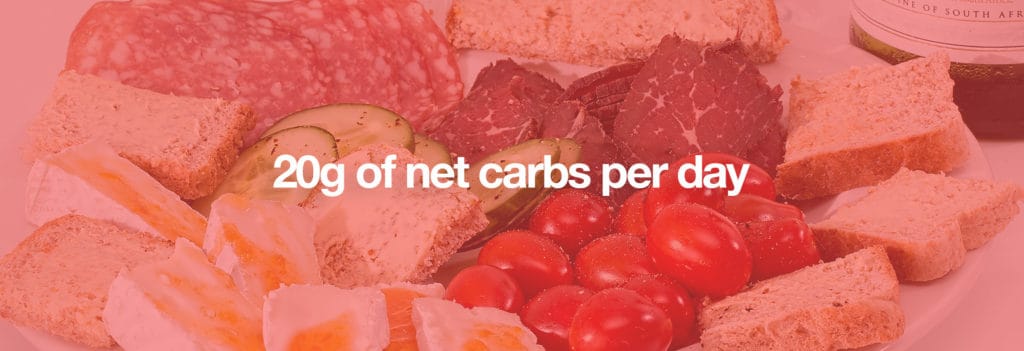
So, this is the most important part of the keto diet. This will make or break your diet.
Your carb intake influences whether or not you are in ketosis. This is true in the beginning when you are just trying to enter into ketosis or you are trying to stay there.
The is, of course, obvious as your body prefers to use glucose as its main source of energy – which comes from the carbs you eat.
My suggestion would be to cut out carbs completely, but as this is not always possible minimize the number of net carbs to the maximum of 20g per day. This will force your body to use its glycogen stores faster.
When the glycogen stores drop to about half, the liver will start oxidizing amino acids for energy and ramps up the ketone production.
3. Intermittent fasting
Intermittent fasting generally means that you consume your calories during a specific time window of the day and choose not to eat food for a larger window of time.
There are many different ways to do intermittent fasting, but I am using the 16/8 method.

This means I am fasting for 16 hours (I do not eat anything) and the eat within a specific 8-hour window. In simple terms, I am eating from 2 PM to 10 PM.
Essentially skipping breakfast and moving lunch to later on the day.
Intermittent fasting is the key to getting into ketosis fast. Just by fasting alone your glycogen stores will deplete very quickly and your body has no choice but to find another fuel source other than relying on carbs.
If you haven’t tried intermittent fasting before, then I will suggest you drink lots of water and black coffee (without sugar nor milk) to suppress your appetite.
4. Exercise
We know that in order to enter into ketosis, you need to deplete your deplete your glycogen stores which can take a while. The longer it takes to expend your carb stores the more it takes for you to enter ketosis.
Exercising uses different forms of energy for fuel. For example amino acids, fats, and carbs. The more you exercise, the more your body depletes its fuel reserves like glycogen.
The intensity of the exercise will play a big role on how fast your energy reserves will be depleted. The lighter the exercise the slower your reserves will be used. A light walk is not a strain for most people, so to significantly deplete glycogen levels, you need to walk quite a distance.

Also, high speed cycling or heavy resistance training relies heavily on glycogen systems, which can ensure a faster way to ketosis.
The only type of exercise I suggest to avoid at this point is HIIT or high-intensity interval training and high-intensity exercises like heavy compound lifts and sprints. This is because intense exercises can increase your stress hormone called cortisol which makes it harder to enter into ketosis.
Once you are keto-adapted, feel free to continue with HIIT.
Based on my experience I found that for me the best type of exercise was time Under tension workout (TUT) and slow cardio like walking and light jogging.
Basically, any movement that doesn’t push your heart rate too high.
5. MCT oil

Previously we went through why you need exercise. Will its important as much as intermittent fasting part, the problem is that when your energy sources are being depleted and without any carbs, chances are you are feeling pretty bad and low energy.
In this point, it may be very hard to start training.
I don’t feel that any kind of supplements is vital for diet or weight loss, but in this case, it has very important role to play – to give you energy during workouts and make you feel good so you don’t bail out before you enter into the magical state called ketosis.
I am talking about MCT oil. This will give you that vital boost of energy, without interrupting the progression. MCT oil is concentrated form of medium-chain triglycerides, extremely healthy type of fat that requires less effort from the liver to digest it.
MCT oil is like a rocket fuel – a fast source of energy, in the form of ketones.
PS! If you want to give MCT’s a shot, then use a special code “APERFECT15” and save 15% on your order.
Check here, if you want an energy boost to fuel your day.
MCT oil also has other awesome benefits: It improves your digestion, lowers cravings, improves blood sugar regulation and helps you enter ketosis faster.
6. Other factors
By now we have gone through all the major factors of the process. There are of course other factors that you should be aware of, but these are more supportive factors and do not play as big role as limiting carbs and exercise at this point.
- Sleep – It is an important part of entering and staying in ketosis as this is the time when the body produces the most ketones. High levels of cortisol at night can cause an inflammatory state and spike of glucose making it harder to enter ketosis. Definitely, try to get at least 8 hours sleep per night and try to avoid artificial blue light after 9 PM. This was the biggest and easiest way I managed to improve my sleep. For this, I can suggest an app called Flux. This has been the biggest improvement for my sleep.
- Water Intake – Okay, this sounds pretty obvious, but I feel that I should still go over this. This is often the reason why your keto weight loss is stalled. In the process of not eating carbs, your body’s water stores also get depleted. This is why you see the first bigger drop in your weight and also this is one of the reasons why you will experience the keto flu. There are so many reasons to drink enough water (when doing keto and even when on a regular diet). Keep your body hydrated. The Institute of Medicine suggests men consume roughly 3 liters (around 13 cups) of total beverages a day. And for women to consume 2.2 liters (around 9 cups) of total beverages per day. This number can vary for everyone.
- Stress – It is no news that stress is a major factor in all areas of our lives, and it can also break your fat adaption. The stress hormone called cortisol can be responsible for many health problems. When trying to enter into ketosis you need to keep your stress levels as low as possible. The main way stress affects ketosis is its main function – elevate sugar levels in the blood through gluconeogenesis! To eliminate stress you need to eliminate stressors, balance blood sugar levels, get enough sleep and be active.
My results
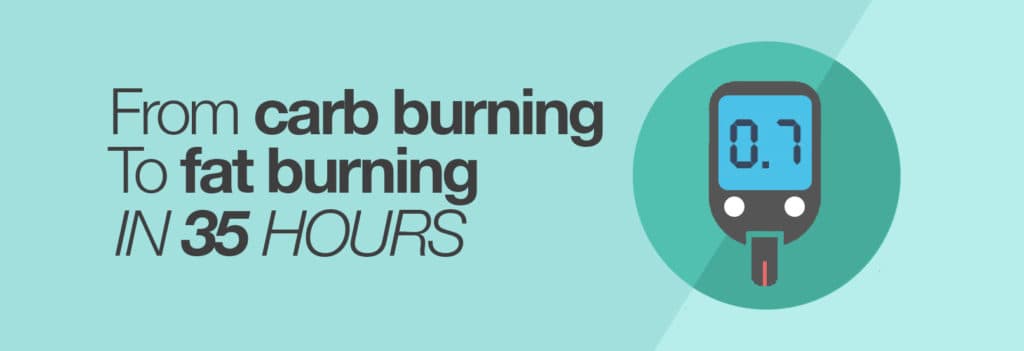
When I started this guide, my only goal was to get into ketosis as fast as possible. Meaning my blood ketone levels need to be above 0.5 mMols when measured. During this, I followed the Carb Burning Method which got me into ketosis under 36 hours.
The day before the start (Sunday) was pretty average. No food coma but no starvation also. I ate like usual – meat and potatoes type of meals. Last meal the day before was around 8 PM. Monday – started following the Carb Burning Method. I woke up at 8 AM and drank some coffee with MCT’s. During midday, I finished my training and my first meal of the day was 1 PM.
Meaning I fasted 17 hours – did not eat anything. Then I went through the day, as usual, cutting out as many carbs as possible and had my last meal again at 8 PM.
Now in this point, my measurements showed me 0.4 mmols which weren’t ideal but as expected. I went to sleep 10.30 PM and woke up around 6 AM.
In this point, my measurements were already 0.7 mmol. And for that point, 35 hours have passed.
Now yes in the mornings the measurements tend to be less accurate and yes one should always measure during the same time of the day.
But in this case, I needed to make an exception (as the goal was to get into ketosis as fast as possible). And I am pretty satisfied with the result.
I believe that this can be achieved even faster with the Carb Burning Method.
Conclusion
Depending on your starting point (weight, health, etc.) by following this guide you should be able to enter ketosis Under 36 hours.There are many paths to ketosis: fasting, nutritional, pathological and so on. But not all of them are healthy and many approaches take time.
The Carb Burning Method is so simple that it isn’t almost a method itself, it has served me well and hopefully will serve you as well. This process can be boosted with using MCT oil.
Cutting out carbs from your diet will definetly push your body into ketosis sooner or later. The longer you do it the better it gets.
How long it took for You to get into ketosis? Please share your experience in the comments below.

Alex is the founder of Bodyketosis, an author, low-carb enthusiast, and a recovering chubby guy who reclaimed his health using the ketogenic lifestyle. The need for the keto life began after his aunt and cousin were diagnosed with type 2 diabetes and he was next in line. Through personal experience and extensive scientific research, Alex offers insightful tips for everything keto.



![[TOP 6] Best Ketogenic Diet Book Reviews Of 2024 (To Master The Keto Diet)](https://bodyketosis.com/wp-content/uploads/2018/02/keto-books-1-768x457.jpg)

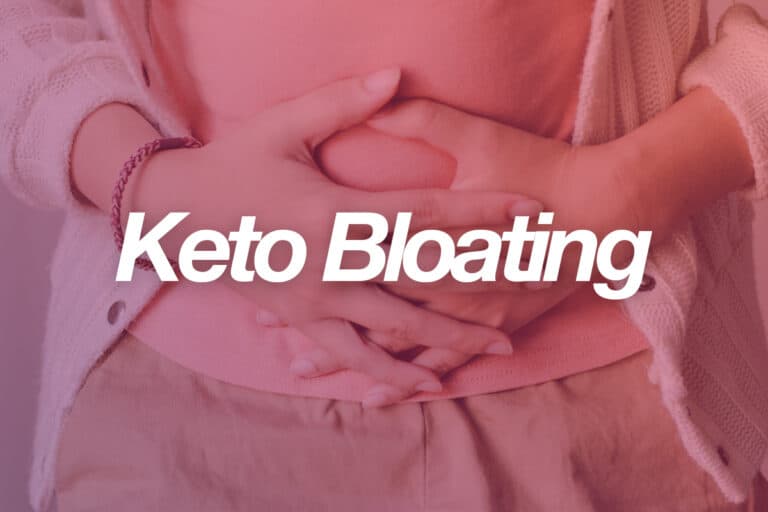
![Detailed Beginners Guide to Keto Diet [Meal Plan Included]](https://bodyketosis.com/wp-content/uploads/2019/04/what-is-keto-diet-768x457.jpg)
